問:道中所說十二元會共十二萬九千六百年,是怎麼算的呢?
According to Taoism, the Twelve Yuan Hui (Eras) are said to span a total of 129,600 years. How is this calculation made?
一. 一個元會十二萬九千六百年,怎麼算出來的?
I. Why is it that one Yuan (Cosmic Cycle) equals 129,600 years?
Shi Mu Lao Da Ren asked, “In Tao, it is stated that Yuan Hui spans 129,600 years. What is the rationale behind this?”
In ancient times, the Duke of Zhou inquired Shang Gao, a mathematician, “I’ve heard that you excel in calculation. Might I inquire how the ancients derived the numerical values for heaven and earth? The vastness of the sky cannot be quantified by mere observation, and the earth’s expanse cannot be measured with scales. So, where do these numbers originate?”
Shang Gao replied, “The numerical values for heaven and earth stem from geometric shapes such as squares and circles. A circle emerges from a square, and a square is derived from a moment.”
Curious, the Duke of Zhou asked, “Could you elaborate on how a ‘moment’ is utilized?”
Shang Gao elucidated, “A ‘moment’ is employed in various ways: a vertical moment is used to ascertain the perpendicularity of a rope, a horizontal moment is utilized to gauge heights, a level moment aids in measuring distances, an inverted moment facilitates depth measurement, a rotated moment forms a circle, and when moments are combined, they form a square.”
Explanation: A vertical moment is used to verify if a rope is upright by aligning one side horizontally against a vertical line. Placing one side of the moment vertically and the other horizontally enables height measurement. Reversing the moment assists in measuring depth. When the moment is placed horizontally on the ground, it facilitates distance measurement between two points. A rotation of moments results in a circle, while combining two moments creates a square.
你知道矩長怎樣嗎?
Do you know what a “moment” looks like?
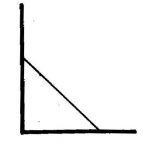

如果說只有一根木條,它在測量一個懸崖的時候,這一根如果沒有一個平衡點,它所測的會是準的嗎?
比如說它這樣子測,但是它沒有先立穩的話,它有可能因為一個角度歪了,測起來的結果就完全的不一樣。
所以矩很重要的就是,它先有一個平衡以後,再測量都很準, 因為它先把這一個角度立準了,最後它所測量的,才會是正確的。
If you only have a wooden stick, when using it to measure a cliff, if the stick lacks a balance point, will the measurement be accurate? For instance, if it is measured without being stabilized first, it might tilt at an angle, leading to vastly different results.
Therefore, the crucial aspect of using a moment lies in achieving balance first. Once balance is established, the measurement becomes accurate because a proper angle is set, ensuring the correctness of what is being measured.
平矩以正繩,就是這一個角度;
A straight moment is employed to straighten a rope. This establishes the angle.

偃矩以望高,就是這一個角度;
A supine moment is used to look at heights. This is the angle.
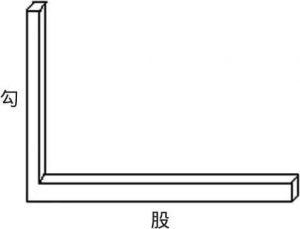

臥矩以知遠,就是這一個角度;
A flat moment is employed to determine distances. This establishes the angle.
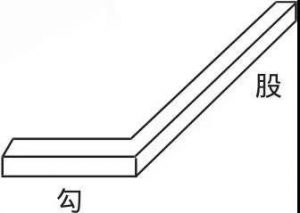

覆矩以測深,就是這一個角度;
A reverse moment is utilized to measure depth. This establishes the angle.
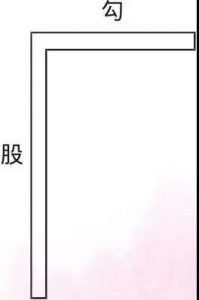
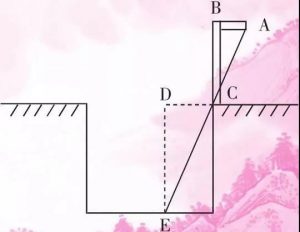
這合起來就是一個四方形,或十字架。
Combining two moments forms a square or a cross.
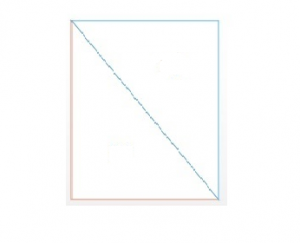
環矩以為圓,就是譬如在科學方面用九十度、四十五度,這些如何測量出三百六十度呢?它將每一個矩,每一根線條當中,最密的那一個密度,都安排下去以後,依照人的所能,以最密度合起來,一個圓周就是三百六十度。
Rotating moments creates a circle. For instance, in science, angles such as ninety degrees or forty-five degrees are commonly used. How can these angles measure three hundred and sixty degrees? By arranging the densest density among every moment and every line, they can be combined to achieve the highest density possible within human capacity, resulting in a complete circumference of 360 degrees.
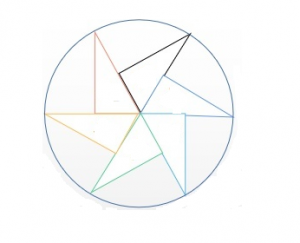
在天地之數來講,並不是以人去測量、去考古種種方式有可能知道的,就像之前所講的,天不可望而測之,地不可尺而度之。那數是怎麼演變而來?就是從最簡單、最容易的入、一理通萬理徹。
在這個矩的方面,大家已經了解,以目前科學的論證來講,就是一種次元,那次元這種東西,它們並沒有辦法去衡量它的空間。又以,其實天地造化,這是上帝的造化。
我懂得不很多,只是了解一個原理。
上帝的造化依照它的數來演變,一切都沒有時間性,也沒有空間性,這一點道理,大家應該懂。依照目前,無論在玄學、科學方面,也都能夠證明。天地萬物造化,突破了時間與空間的限制。那人要怎麼去理解時間與空間的原理呢?就只有用數的推演來了解。
在科學方面也是如此,來了解次元的原理,但這了解的是原理,而不是硬把一個形象套在它的上面來去解釋。在原理方面,就是立方體來解釋,立方體就是一個依照數來講,最適合推演數的一個立方體。
When it comes to understanding the numerical essence of heaven and earth, human methods of measurement and archaeology fall short. As previously mentioned, the vastness of the sky cannot be quantified by mere observation, and the earth’s expanse cannot be measured with scales. How then did this numerical concept develop? It originates from the simplest and most accessible means of comprehending everything.
Considering a moment, it’s evident, according to current scientific discourse, that it represents a dimension, beyond the realm of measurable space. Moreover, the creation of heaven and earth is attributed to God. While I may not possess extensive knowledge, I grasp the underlying principle: God’s creation unfolds according to a divine numerical order, transcending time and space.
This truth is comprehensible both in metaphysics and science. The creation of all things surpasses the confines of time and space. How can we fathom the principles governing time and space? It can only be achieved through numerical deduction.
Similarly, in science, our aim is to understand the principles of dimensions without forcibly confining them to visual representation. Conceptually, a cube serves as an apt tool for elucidating these principles, as it provides a tangible framework for deriving numerical insights.
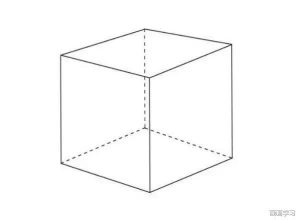
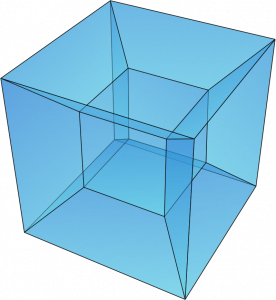
這個立方體,以次元來講,就是一種超立方體,超越現象的立方體。大家現在可以想像這個立方體,是一個超越時間、空間的超立體。它的原理有幾面呢?有幾個邊呢?
以邊來講的話,一、二、三、四 、五、六、七、八、九、十、十一、十二;
以面來講的話,一、二、三、四、五、六。
這樣大家可以看得出來嗎?
十二邊,六個面,一個超立方體就代表時間與空間的演變算法。稱做維度。以十二等邊,為時間基數,時不離五行,十二乘於五等於六十,六十做時間算法維度;
以六合上下高、左右寬、前後長,做空間維度算。這樣講大家懂了嗎?臨時從古老的字典裡面翻出來,還帶「臭殕味」(台語)。
這樣大家懂得,為什麼時間維度是六十,空間維度是六了嗎?
時間乘空間,六十乘於六等於三百六十;
空間乘時間,六乘於六十,也等於三百六十。
時空乘於空時,三百六十乘於三百六十,是多少呢?十二萬九千六百,對嗎?
看來這「臭殕味的東西」也滿有用的。
這叫做演數,不叫知數 ,你們一定要悟理才能夠知數,等到你們親自在天地造化當中走一遭的時候,你就會發現:這時、空都不重要了。
This cube, in terms of dimensions, is a hypercube, surpassing mere phenomena. Now, envision this cube—an n-dimensional hypercube transcending time and space. How many faces does it possess? How many edges?
In terms of edges: one, two, three, four, five, six, seven, eight, nine, ten, eleven, twelve;
In terms of faces: one, two, three, four, five, six.
Can everyone perceive it in this manner? With twelve sides and six faces, a hypercube embodies the evolution and algorithm of time and space, constituting what is known as dimensionality. Utilizing twelve equal sides as the temporal foundation, time intertwines with the five elements. Twelve multiplied by five equals sixty, thereby forming the dimensional basis of time. To calculate the spatial dimension, consider the upper and lower height, left and right width, and front and rear length of the six faces. Does everyone grasp this concept? Though translated from an older source, it still retains a certain depth.
In this framework, can everyone comprehend why the time dimension is sixty and the space dimension is six? When time is multiplied by space, sixty multiplied by six equals three hundred and sixty. Similarly, when space is multiplied by time, six multiplied by sixty equals three hundred and sixty as well. When TimeSpace is multiplied by SpaceTime, three hundred and sixty is multiplied by three hundred and sixty, resulting in one hundred twenty-nine thousand six hundred, correct?
It appears that this “esoteric concept” proves quite practical. This is known as an algorithm—comprehending principles precedes understanding numbers. Through contemplating the creation of heaven and earth, one realizes that time and space lose their significance.
這叫作四象算法。四象的意思就是無極生太極,太極生兩儀,兩儀化四象,所以四象才能夠演出八卦。那四象也就是時乘空、空乘時,時空乘空時,就是它不斷演變之下,將所有的密度,所有的內涵,沒有遺漏掉的含括在內。
This is known as the Four-Form algorithm. The Four Forms principle elucidates how Wuji (No Ultimate) begets Taiji (Great Ultimate), Taiji (Great Ultimate) begets Two Modes (Yin and Yang), and Two Modes transform into Four Forms (Major and Minor Yin and Yang), thereby enabling the manifestation of Eight Trigrams. The Four Forms entail Time multiplied by Space, Space multiplied by Time, TimeSpace multiplied by SpaceTime. Through its continuous evolution, it encompasses all densities, all contents, leaving nothing amiss.
道中所說十二元會演算法是來自於中國北宋理學家邵雍所提出的元、會、運、世,是一種用易理推算世界歷史年代的週期單位的理論。他把世界從開始到消滅的一個周期叫做一元。按照一年十二月,一月三十日,一日十二時辰,一時辰三十分的數目來附會計算天地歷史時間。一元十二會,一會三十運,一運十二世,一世三十年,故一元之數為十二萬九千六百年。認為世界的歷史就是如此始而終,終而復始的不斷循環。呈現整個自然一切事物都是從無生有,有歸於無的觀點。
The algorithm for the Twelve Yuan Hui (Eras) mentioned in Tao originates from the concepts of Yuan, Hui, Yun, and Shi proposed by Shao Yong, a Neo-Confucianist during the Northern Song Dynasty. This theory serves as a means to calculate the fundamental unit of the world’s historical era. Shao Yong referred to a cycle spanning from the inception to the conclusion of the world as a Yuan.
According to this framework, one year comprises twelve months, each month consists of thirty days, and one day comprises twelve divisions (following early Chinese and Babylonian timekeeping and astronomy, with each division equivalent to two hours). By employing this method, the historical timeline of heaven and earth is determined.
Within one Yuan, there are twelve Hui, thirty Yun within one Hui, twelve Shi (generations) within one Hui, and thirty years within one Shi (generation), resulting in a total of 129,600 years for one Yuan. This perspective posits that the history of the world unfolds in a continuous cycle, moving from inception to conclusion and then beginning anew. It presents the viewpoint that everything in nature emerges from nothingness and ultimately returns to it.
Drawing from the azimuth map of the sixty-four hexagrams, Shao Yong articulated the principles of image and number found in “Huangji Jingshi,” spanning from “Yuan, Hui, Yun, Shi” to “year, month, day, hour.” These principles are utilized to infer the fluctuations of the celestial realm and the vicissitudes of human affairs, including the rise and fall of dynasties and national fortunes.
邵雍提出「元、會、運、世」的時間單位,其中:
1元統12會。
1會統30運。
1運統12世。
1世統30年。
以此推算:
1世統30年。
1運統12世,共360年。
1會統30運,共10800年。
1元統12會,共129600年。
Shao Yong introduced the time units of “Yuan, Hui, Yun, Shi,” with the following relationships:
1 Yuan consists of 12 Hui.
1 Hui comprises 30 Yun.
1 Yun contains 12 Shi.
1 Shi is equivalent to 30 years.
Based on these relationships:
1 Shi equals 30 years.
1 Yun consists of 12 Shi, totaling 360 years.
1 Hui comprises 30 Yun, amounting to 10,800 years.
1 Yuan encompasses 12 Hui, totaling 129,600 years.
元Yuan (Cycle), 會Hui (Era), 運Yun, 世Shi (Generation), 年Year, 月Month,日 Day, 時Hour | ||||||||
| 一元 One Yuan | 一會 One Hui | 一運 One Yun | 一世 One Shi | 一年 One Year | 一月 One Month | 一天 One Day |
|
會Hui | 12 |
|
|
|
|
|
|
|
運Yun | 360 | 30 |
|
|
|
|
|
|
世Shi | 4320 | 360 | 12 |
|
|
|
|
|
年Year | 129600 | 10800 | 360 | 30 |
|
|
|
|
月Month |
| 129600 | 4320 | 360 | 12 |
|
|
|
日Day |
|
| 129600 | 1088 | 360 | 30 |
|
|
時Hour (two-hour division) |
|
|
| 129600 | 4320 | 360 | 12 |
|
二.十二元會的命名
II. The naming the Twelve Hui (Eras)
地支是指木星軌道被分成的十二個部分。木星的公轉周期大約為十二年,所以,中國古代用木星來紀年,故而,而稱為“歲星”。後來又將這十二個部分命名,這就是“地支”。
The Earthly Branches represent the twelve divisions of Jupiter’s orbit. Jupiter completes its revolution approximately every twelve years. Hence, in ancient China, Jupiter served as a measure of the year, leading to its Chinese designation as the “Astro of the Year.” Subsequently, these twelve divisions were named the “earthly branches.”
天地循環圖中一元有十二會。十二元會按地支命名:子會、丑會、寅會、卯會、辰會、巳會、午會、未會、申會、酉會、序會、亥會。
In the Cycle of Heaven and Earth diagram, one cycle (one Yuan) comprises twelve Hui (Eras). These twelve Yuan Hui are named after the Earthly Branches: Zi Hui, Chou Hui, Yin Hui, Mao Hui, Chen Hui, Si Hui, Wu Hui, Wei Hui, Shen Hui, You Hui, Xu Hui, and Hai Hui.
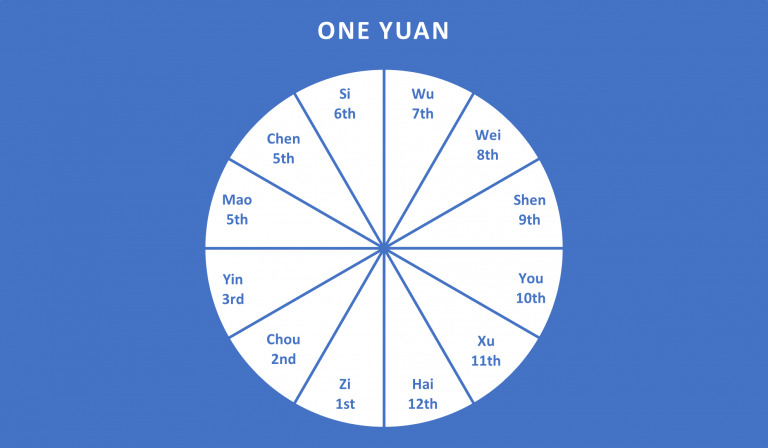

Below is the translation of the above diagram.
| Earthly Branch | Evolution during One Yuan | Solar Month | 12 two-hour periods of the day |
Zi | 1st | Beginning of the heavens | 11th solar month (7th December to 5th January) | 11 p.m.- 1 a.m. |
Chou | 2nd | Earth genesis | 12th solar month (6th January to 3rd February) | 1-3 a.m. |
Yin | 3rd | Original Spirits came to world | 1st solar month (4th February to 5th March) | 3-5 a.m. |
Mao | 4th | Initial Buddha 6000 years | 2nd solar month (6th March- 4th April) | 5-7 a.m. |
Chen | 5th | Third Buddha | 3rd solar month (5th April- 4th May) | 7-9 a.m. |
Si | 6th | Fifth Buddha | 4th solar month (5th May – 5th June) | 9-11 a.m. |
Wu | 7th | Green Yang Period | 5th solar month (6th June- 6th July) | 11 a.m. – 1 p.m. |
Wei | 8th | White Yang Period | 6th solar month (7th July- 6th August) | 1-3 p.m. |
Shen | 9th | Original Spirits returning | 7th solar month (7th August – 7th September) | 3-5 p.m. |
You | 10th | Physical phenomena return to nothingness | 8th solar month (8th September – 7th October) | 5-7 p.m.
|
Xu | 11th | Energy realm returns to nothingness | 9th solar month (8th October- 6th November) | 7-9 p.m. |
Hai | 12th | Chaos | 10th solar month (7th November – 6th December) | 9-11 p.m. |
參考資料:
王午年專體研討彙編下 141至143頁。